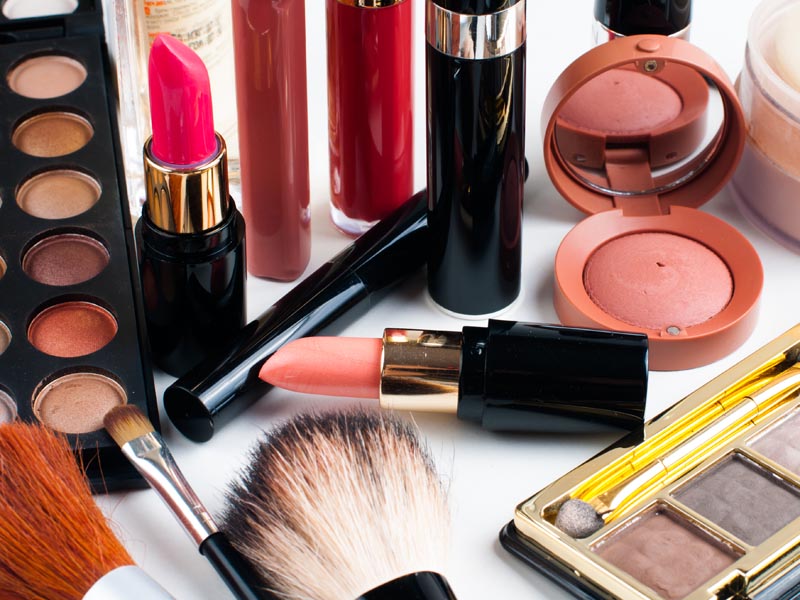PUBLICIDAD
Guide to Buying Non-Toxic Cosmetics
0Chronic exposure to cosmetics or creams containing toxic substances may be damaging your health over the years. While federal authorities find a national safety standard for these products, you must do some work. We tell you how.
Publicidad
https://hdstatic.net/gridfs/holadoctor/53e155cdba37959f01003bfd_0_34-1407276493698.jpg
Chronic exposure to cosmetics or creams containing toxic substances may be damaging your health over the years. While federal authorities find a national safety standard for these products, you must do some work. We tell you how.
https://hdstatic.net/gridfs/holadoctor/53e155cdba37959f01003bfd_1_31-1407276520241.jpg
Until the laws change, a no-brainer way to avoid many risky chemicals in your cosmetics is to shop at Whole Foods. (Check out its affordable 365 Everyday Value line.) If you shop in other stores, you can download the following helpful apps to your phone.
https://hdstatic.net/gridfs/holadoctor/53e155cdba37959f01003bfd_2_47-1407276520281.jpg
Reading the tiny print of an ingredient list can be tricky, especially when you´re too busy shopping. Luckily, free apps like Think Dirty, Skin Deep Cosmetics, and Good Guide are available to help you understand what lurks beyond the pretty packaging and make an informed decision about what products to buy.
https://hdstatic.net/gridfs/holadoctor/53e155cdba37959f01003bfd_14_27-1407456619932.jpg
To use, you simply open the app in your phone and scan the bar code on the product. You´ll see its components and a rating based on how safe the product is, more information to choose better.
https://hdstatic.net/gridfs/holadoctor/53e155cdba37959f01003bfd_3_46-1407276544427.jpg
Dangerous chemicals
You may not have expected to find carcinogens in your blush or lipgloss, but many cancer-causing ingredients used in cosmetics are hidden behind the name of chemical preservatives. The following is a list of high-risk components, products that contain them, and safer alternatives that don´t.
https://hdstatic.net/gridfs/holadoctor/53e155cdba37959f01003bfd_4_15-1407277478686.jpg
1. Formaldehyde
You´ll find it in hair straightening and nail products as well as in eyelash glues. It´s a preservative classified as a human carcinogen when inhaled. When you use personal-care products with formaldehyde, you can expose not only your skin to the chemical, but also your lungs. Scan ingredients lists for formaldehyde, formalin, or methylene glycol. The two polishes on the left contain it, while the one on the right does not.
https://hdstatic.net/gridfs/holadoctor/53e155cdba37959f01003bfd_5_3-140727750212.jpg
2. Formaldehyde releasers and 1,4-dioxane
These cancer-causing preservatives release formaldehyde over time or when mixed with water. You´ll find them in anti-wrinkle creams, makeup removers, hair conditioners, and body washes. You won´t see it on labels because it´s formed as a by product during the manufacturing process, so look out for polyoxyethylene and ingredient names that begin with “PEG” or polyethylene, or end with “eth” or “oxynol.”
https://hdstatic.net/gridfs/holadoctor/53e155cdba37959f01003bfd_6_30-1407277526685.jpg
3. Phthalates
Hidden in nail polishes, hair sprays, perfumes, deodorants, lotions, and other products, phthalates are deemed toxic by the Federal Hazardous Substances Act based on animal studies suggesting that they may pose reproductive and developmental health risks. Steer clear of diethyl phthalate (DEP) and dibutyl phthalate (DBP) by avoiding products with ingredients lists that include the word “fragrance.”
https://hdstatic.net/gridfs/holadoctor/53e155cdba37959f01003bfd_7_5-140727755669.jpg
4. Triclosan and triclocarban
It´s found in hand and body washes, deodorants, toothpastes, and some cosmetics. Recent animal studies have shown that these antibacterial agents can affect reproductive growth and developmental systems. They might also be fueling an increase in antibiotic-resistant bacteria. Here we show two products by Nars: the one on the left contains it, while the one on the right does not.
https://hdstatic.net/gridfs/holadoctor/53e155cdba37959f01003bfd_8_3-1407277585562.jpg
Pioneer State
Minnesota recently became the first state to ban triclosan in those products. The law won’t be effective until 2017, but some companies such as Avon and Procter & Gamble have stopped using the ingredients or have plans to discontinue their use.
https://hdstatic.net/gridfs/holadoctor/53e155cdba37959f01003bfd_9_50-1407277700646.jpg
5. Coal Tar
You´ll find it in dandruff shampoos and ointments to treat skin conditions such as eczema. Derived from coal, this complex mixture of hundreds of chemical compounds is classified by the U.S. National Toxicology Program as a known human carcinogen. There are known cases of skin cancer among patients using therapeutic coal-tar preparations.
https://hdstatic.net/gridfs/holadoctor/53e155cdba37959f01003bfd_10_27-1407277748639.jpg
What to Look For On the Labels
In the U.S., federal regulations allow coal tar to be used in nonprescription products for treating dandruff, psoriasis, and similar skin conditions. Scan product ingredients lists for coal tar. You may also want to avoid selenium sulfide, a coal-tar alternative used in some shampoos that is a probable human carcinogen based on animal studies.
https://hdstatic.net/gridfs/holadoctor/53e155cdba37959f01003bfd_11_37-1407277781447.jpg
6. Nanomaterials
They can be in makeup, face creams, and personal-care products such as toothpaste and sunscreen. A Rutgers University study testing the effects of using blusher and other cosmetic powders with nanoparticles found “a strong potential” for breathing them into the lungs and upper airways in the throat and head.
https://hdstatic.net/gridfs/holadoctor/53e155cdba37959f01003bfd_12_25-1407277848535.jpg
Small but Deadly
Nanoparticles are so tiny that they can cross the blood/brain barrier and reach other organs more easily than other particles can. Some products, like the blush by Serge Lutens pictured in the photo, openly boast about nanoparticles´ allegedly amazing effects. But many brands keep mum about it, and disclosure isn´t required.
https://hdstatic.net/gridfs/holadoctor/53e155cdba37959f01003bfd_13_16-1407277848523.jpg
They're in Your Favorite Brands
A 2012 study of liquid and mineral powder foundations, concealers, and other products from 10 brands, including Clinique, L’Oréal, Revlon, and The Body Shop, found they all contained nanoparticles. Tip-offs of possible nano ingredients: acrylates, alumina, carbon black, cerium oxide, colloidal gold, fullerene, iron oxides, platinum, silica, titanium dioxide, and zinc oxide.
/es/%C3%A1lbum-de-fotos/guide-to-buying-non-toxic-cosmetics
/es/%C3%A1lbum-de-fotos/guide-to-buying-non-toxic-cosmetics-
/es/%C3%A1lbum-de-fotos/guide-to-buying-non-toxic-cosmetics-
/es/%C3%A1lbum-de-fotos/guide-to-buying-non-toxic-cosmetics-
/es/%C3%A1lbum-de-fotos/guide-to-buying-non-toxic-cosmetics-dangerous-chemicals
/es/%C3%A1lbum-de-fotos/guide-to-buying-non-toxic-cosmetics-1-formaldehyde
/es/%C3%A1lbum-de-fotos/guide-to-buying-non-toxic-cosmetics-2-formaldehyde-releasers-and-14-dioxane
/es/%C3%A1lbum-de-fotos/guide-to-buying-non-toxic-cosmetics-3-phthalates
/es/%C3%A1lbum-de-fotos/guide-to-buying-non-toxic-cosmetics-4-triclosan-and-triclocarban
/es/%C3%A1lbum-de-fotos/guide-to-buying-non-toxic-cosmetics-pioneer-state
/es/%C3%A1lbum-de-fotos/guide-to-buying-non-toxic-cosmetics-5-coal-tar
/es/%C3%A1lbum-de-fotos/guide-to-buying-non-toxic-cosmetics-what-to-look-for-on-the-labels
/es/%C3%A1lbum-de-fotos/guide-to-buying-non-toxic-cosmetics-6-nanomaterials
/es/%C3%A1lbum-de-fotos/guide-to-buying-non-toxic-cosmetics-small-but-deadly
/es/%C3%A1lbum-de-fotos/guide-to-buying-non-toxic-cosmetics-theyre-in-your-favorite-brands
















